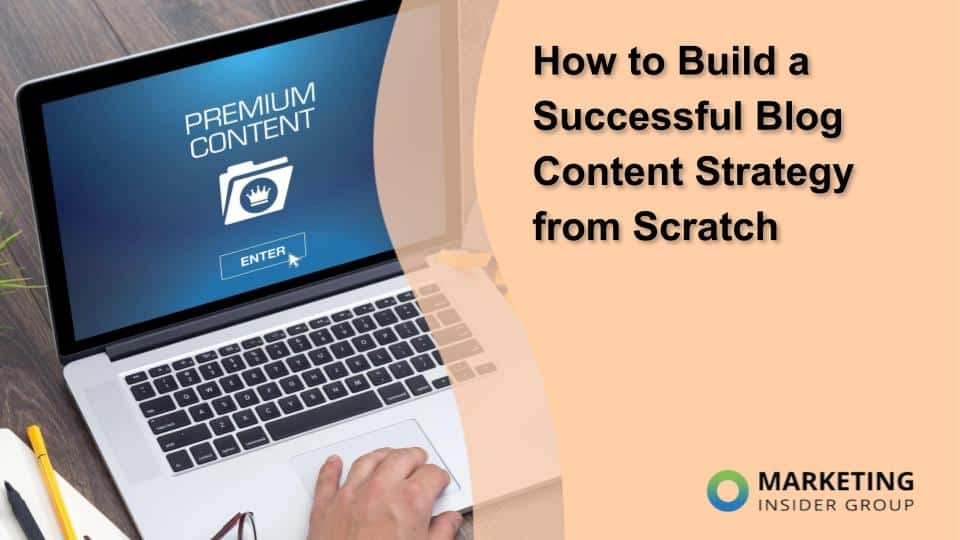A successful blog content strategy is the cornerstone of a strong online marketing presence. Building one from the ground up requires careful planning, clear objectives, and actionable steps to engage your audience while achieving your goals.
Establish Clear Goals
Begin by defining why you are creating a blog. Clearly outline measurable outcomes such as increasing website traffic, driving conversions, or enhancing engagement. Without specific objectives, tracking progress becomes challenging. Your goals should align directly with the overall mission of your business or organization.
Know Your Target Audience
It is essential to have a deep understanding of your readers. Conduct thorough audience research to uncover their needs, preferences, and interests. Analyze existing customer data, review feedback, and monitor online discussions related to your industry.
Keyword Research and SEO Strategy
Keywords play a crucial role in connecting search intent with your content. Research relevant search terms that align with your audience's needs and seamlessly incorporate them into your topics. Optimize titles, headings, and meta descriptions for readability and search engine visibility.
Develop Content Themes and Pillars
Organize your blog around consistent themes that support your objectives. Break down each theme into actionable subtopics to create a cohesive narrative for your audience.
Create an Editorial Calendar
Establishing an editorial calendar is vital for managing content creation. It helps in planning what to publish, when to post, and who will be responsible for creating the content.

Emphasize Quality over Quantity
While consistency is important, prioritize quality over quantity. Focus on delivering valuable, well-researched content that resonates with your audience.
Utilize Visual Content
Visual elements such as graphics, charts, and videos enhance the reader experience. Use visuals to complement your written content and make it more engaging.
Effective Content Promotion
Promote your blog posts through various channels such as email campaigns, social media platforms, and collaborations with industry influencers. Repurpose your content in different formats to extend its reach.
Measure and Optimize Performance
Utilize analytics tools to track the performance of your blog. Analyze metrics such as time on page, bounce rate, and conversion rates to optimize your content strategy.
Build a Community Around Your Blog
Encourage community engagement by responding to comments, fostering discussions, and highlighting reader contributions. Create a sense of belonging among your audience.
Collaborate with Industry Experts
Partnering with industry experts can enhance the credibility of your blog. Collaborate on guest posts, interviews, or co-authored pieces to bring fresh perspectives to your platform.

Optimize for Mobile Readers
Ensure your blog is mobile-friendly to cater to the growing number of mobile users. Use responsive design and test your blog on different devices to provide a seamless experience.
Stay Adaptive to Trends
Monitor industry trends and adapt your content strategy to stay relevant. Flexibility is key to seizing new opportunities and maintaining a competitive edge.
By following these steps, you can develop a blog content strategy that resonates with your audience and delivers long-term value. For expert assistance in building a successful blog content strategy, contact Marketing Insider Group for a demonstration of our services.
Frequently Asked Questions
What eCommerce Marketing Strategy should you follow?
There are three main types of eCommerce marketing:
- Direct marketing
- Search Engine Optimization (SEO).
- Social Media Marketing
Direct marketing means sending emails directly at potential buyers. These emails could contain coupons, discounts, special offers, etc. This marketing strategy aims to build customer loyalty.
Search engine optimization works by improving the ranking of your website in search engines like Google, Bing, Yahoo, etc. You'll get more traffic when your site appears near the top of results when people look up keywords related to your product or service.
Social media marketing includes websites like Twitter, Facebook Pinterest, Instagram, YouTube, and Instagram. To connect with your audience. It's easy to set-up and use, and it's effective.
Each of these options has its pros, and cons. SEO is time-consuming and requires effort while direct advertising is easy to do. You won't get the full benefits of eCommerce marketing if you focus only on one method. We recommend that you combine different marketing methods.
Sending emails could be one way to promote your products and help you rank well in search engines results. Or you could advertise on social media and then link to your site from those pages.
There are many marketing options for your eCommerce store. Select the best options for your company and keep them in place over time. Good luck!
What are some direct marketing examples?
Direct Marketing Examples include postcards, brochures, flyers, e-mails, etc.
Direct marketing is a great way to reach people anywhere you are. It is the best way to reach customers who already prefer your product or services over others.
You must know what kind of message would appeal most to your target market.
Finding out what your customers want is key to delivering it.
Direct marketing can be used to promote your business in many different ways. Direct marketing can be used to promote your business in many ways. You can send out catalogs to potential customers and advertise in local papers.
You could also create a separate mailing list for your customers. A good contact database will make it easy to add subscribers to your mailing list.
Finally, you can ask your current customers if they'd like to receive promotional materials. Sign up for special offers to receive discounts from some companies.
What budget should I set aside for my first campaign in digital marketing?
It all depends upon the type of campaign that you intend to launch. Your first campaign may cost you between $50 and $100.
You can purchase advertising space on search engines like Google and Bing to get started. These ads typically cost $10 per click.
If you have a website, you can create banner advertisements at various places on your site. This will help attract new visitors, and also bring back old ones to your site.
You can also hire a freelancer for banner design. Freelancers charge typically $20 to $30 an hour.
Once you have created your first advertisement, you can start tracking results. There are many free analytics programs available on the web.
You can also manually track data. You can also keep track of data manually to gather information about your campaigns.
This data will allow you to determine if your campaign was successful.
If that is the case, you can still try different methods to find one that works.
Are there any potential risks in digital marketing?
Digital marketing is not without risks.
For starters, you must ensure you protect your online reputation by being careful about what you say on social networks.
You must also ensure that your content is original and doesn't infringe upon any other intellectual property rights.
In addition, you run the risk of losing control over your brand image online if it isn't closely monitored.
Finally, identity theft can occur if you give your permission for someone to use your personal information.
How to protect your online reputation
- Pay attention to what you post on social networks
- Ensure All Content Is Original And Does Not Infringe On Anyone Else's Intellectual Property Rights
- Monitor Your Brand Image
- Strong Passwords
- Use personal details only with permission
- Notify Us of Any Unauthorized Activity immediately
- Don't Post Photos Of Yourself Or Others In A Disturbing Way
- Never divulge your social security number
- Keep up to date with the most recent news
- Stay Away From Scams
- Secure Password
- Always Be On The Lookout for Updates
- Don't Share Too Much Information
- You should be vigilant when giving out credit card numbers
- Send money via EMail.
- Beware of fake websites
- Negative reviews can hurt your business.
- Check Your Credit Reports Regularly
- Pay attention to your privacy settings
- Ask someone who knows you well before sharing something
What are the most important types of marketing?
Marketing is the act and communication of ideas, values, messages, and information to consumers. It is common to hear “marketing” interchangeably used with advertising. Marketing goes beyond advertising. Marketing is all communication that promotes and markets a product or service.
Marketing is made up of three components: promotion, branding, and distribution. A company's branding is the way it represents itself to its target market. Promotion is the process of attracting attention to your brand via paid advertisements, promotions that are free, and other public relations activities. Distribution is how you get your message across to your target audience. It can be done through traditional methods like television, radio, print, and email, but new technologies have made this more accessible than ever.
Statistics
- Today, 81% of brands around the world have affiliate programs. (influencermarketinghub.com)
- From 2020 to 2022, eMarketer predicts that digital marketing will grow by 36% and take up 54% of marketing budgets! (marketinginsidergroup.com)
- A poll earlier this year found that 14% of older Gen Z's had bought an item in the previous six months based on an influencer's recommendation. (influencermarketinghub.com)
- In 2017, 34% of marketers cited co-branding as the most effective way to increase the number of email subscribers. (influencermarketinghub.com)
- According to statistics, 60% of online shoppers worldwide actively search for coupons before purchasing from a virtual shop. (influencermarketinghub.com)
External Links
hubspot.com
moz.com
- SEO Learning Center – Moz
- [Case Stud] How Moz Ranked #1 in Search Engine Optimization for a High-Volume Keyword In Under 3 Months
youtube.com
influencermarketinghub.com
How To
How to obtain your Google Digital Marketing and E-commerce Professional Certificate
Google offers a free course online called Search Engine Optimization (for beginners) This is a great way learn how to optimize your site for search engines like Google.
This course will cover important SEO topics like page titles, meta tags and internal linking. If you already have a website, these lessons will help you improve its performance.
After the course has been completed, you will receive your certificate of completion. This certificate has a two-year validity and allows you add “SEO,” to your LinkedIn profile.
When you finish the course, you also earn 10 CPE credit. These credits can be accepted at most universities and colleges.
Google also provides a paid certification program called Google Certified Partner (GCP). Candidates must pass a rigorous exam, and provide proof of their experience to become GCP certified.
————————————————————————————————————————————–
By: Lauren Basiura
Title: How to Develop an Effective Blog Content Strategy from Scratch
Sourced From: marketinginsidergroup.com/best-practices/how-to-build-a-successful-blog-content-strategy-from-scratch/
Published Date: Mon, 03 Feb 2025 11:00:53 +0000
